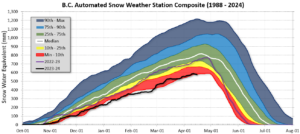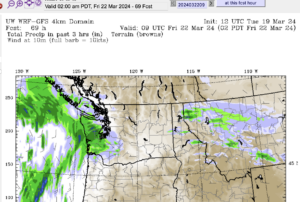Summer heat continues. Global nuclear bomb count rises. Climate action scarce

UPDATE Thursday 3:45PM
Currently hotspot in Canada! Woot!
original post below
Wednesday August 24
We are back into a few days of nice summer weather as we reach for highs above 30°C on Wednesday, Thursday and Friday. The hottest day will be Thursday when we can expect a high of 34 and humidex of 36 according to Envronment Canada. UWash has it slightly cooler with highs to 33 on Thursday but the two are close enough not to matter.
There is no rain in the forecast until a possibility begins around Monday or Tuesday next week.
Global Heat and Arctic Ice records.
Unless you have been under a rock you will have noticed the news that July was the hottest on record.(US NOAA). The graph below shows all the July’s since 1880. Globally, the temperature for that month has risen by 0.99°C.
People often say 0.99°C doesn’t sound like much. But if you calculate how much extra energy that actually represents like you can with formulas on this website, the perspective changes.
it takes about 5.95 x 1021 Joules to raise the temperature of the atmosphere one degree Celsius.
How much energy is 5.95 x 1021? (or 6 sextillion Joules, six and 21 zeroes). The nuclear bomb dropped on Hiroshima released 63 TeraJoules. 6 sextillion Joules is 6 billion TeraJoules. So the amount of heat energy accumulated in the atmosphere for 1°C of warming of the planet equals the energy of 95 million Hiroshima bombs.
Or, if you want something a little more down to Earth, an average person would burn around 0.000002419 TeraJoules to cycle 20 kilometres per hour for an hour, so 20km. At that constant speed, a person would have to ride for 2,480,363,786,688,714 kilometres to output the same amount of energy as our 95 million nukes. That would be like riding your bike all the way to Pluto and back over 2 million times (Pluto is ‘only’ 4,000,000,000 km away from Earth).
OK… enough with the crazy math.
Arctic Sea Ice far below normal
Have you been wondering about the Arctic? We have not heard much about it this year. Unfortunately the news only picks up on things when there are ‘new records’. Here is the latest sea ice extent graph from the NSIDC.
You can see it is well below the 2 Standard Deviation zone which even though it is not a record, makes it an exceptionally low year in the grand scheme. It is actually on track to be about the same as last year for September’s minimum.
That of course means heat will continue to be pumped into the high Arctic that would normally be reflected away by ice and snow.
Climate Inaction (including in BC) is dangerous.
I came across this graph put out by scientists writing at Climate Central this week in an article titled “Negative Emissions Key to Meeting 2°C Threshold”.
It is based on new research published here which states:
(I will post a quote and then explain it)
In summary, the chances of avoiding the 2° and especially the 1.5° temperature target are highly sensitive to the timing of climate mitigation
In other words, if we want to avoid dangerous warming (2ºC) or avoid warming that is likely to at least submerge several island nations and cause serious global harm (1.5ºC). The time at which we start reducing CO2 emissions (‘mitigation’) matters a lot.
Current INDCs could not avoid 2° of warming without relying on substantially greater net negative emissions later in the century
INDCs refer to the emissions reductions Commitments made at Paris by the countries of the world. So this quote means that those commitments would not be enough to avoid 2ºC of warming if we do not find a way to not only stop adding CO2 to the atmosphere before 2050, but also remove large amounts of CO2 from the atmosphere after that as well.
In order to achieve 2° with an RCP2.6 level of long-term carbon removal, 2030 net GHGEs must be reduced by 10% from 2015 levels, significantly more than the unconditional INDCs
This means that to even give us a chance at being able to remove enough CO2 to stay below 2ºC we would have to reduce emissions by 10% compared to 2015 levels by 2030. The current plan from the world does not achieve that. And for local context, the newly announced Climate Leadership Plan by the BC Government does not even set a 2030 reduction target. Hardly leadership. Emissions in BC may actually rise if that plan is followed. If this was an example for the world, we would be on an irreversible pathway to very dangerous levels of warming and disruption.
You might say the word “irreversible” is too strong. But I will give you this quote to back it up.
Avoiding 1.5° of warming altogether, even with immediate action, would require considerably greater effort—at least a 25% cut in effective global CO2 emissions from present-day levels by 2030, a rate of reduction which many would consider impossible.
The Canadian delegation in Paris made a lot of noise about 1.5ºC. This latest research indicates actually avoiding 1.5ºC is considered by many people as impossible at this point because of the massive change needed. Is it impossible?
One thing is for sure, we have waited too long. We cannot afford to wait any longer to avoid 2ºC. There is incredible opportunity available to us in the transition and in the result of a Fossil Fuel free economy. But we must force our governments to act very strongly to make it happen.









